JonBenet Ramsay’s murder is perhaps the world’s highest profile, unsolved homicide case. Officially unsolved, that is. For today’s True Crime Thursday post, I resurrected the most-read piece from my personal site at Dyingwords.net. Drawing on thirty-plus years of hands-on experience in human death investigations, these are my thoughts about who really murdered JonBenet Ramsay:
_________________________________
On December 26, 1996, the beaten and strangled body of six-year-old JonBenet Ramsey was found hidden in the basement of her Boulder, Colorado home. Immediately, police and media suspicion focused on her wealthy parents, John Bennet Ramsey and Patricia (Patsy) Ramsey, as being responsible. Now—twenty-five years later—the child beauty queen’s cold case has little new to offer except for the stupid suggestion that JonBenet never really died and that she’s actually the pop-star, Katy Perry.
Setting crazy conspiracy theories aside, the fact remains that someone viciously slaughtered JonBenet. The little girl became a cultural obsession, and the person or persons guilty of JonBenet’s murder were never prosecuted. Was it a lack of viable suspects? Lack of admissible evidence? A homicide investigation mishandled right from the start? Or was it failure to properly decipher the murder mystery’s most important clue—the ransom note?
Here’s a look at what the case facts tell us about who really murdered JonBenet Ramsey.
 Patsy Ramsey claimed to have come downstairs to the kitchen at five o’clock on Boxing Day morning and found a two-and-a-half page, hand-written ransom note on the landing of their secondary staircase. The author directed the letter at John Ramsey and claimed to represent a group of individuals from a foreign faction who were “in possession” of JonBenet. The note demanded a ransom of $118,000 be paid in certain bills or JonBenet would die.
Patsy Ramsey claimed to have come downstairs to the kitchen at five o’clock on Boxing Day morning and found a two-and-a-half page, hand-written ransom note on the landing of their secondary staircase. The author directed the letter at John Ramsey and claimed to represent a group of individuals from a foreign faction who were “in possession” of JonBenet. The note demanded a ransom of $118,000 be paid in certain bills or JonBenet would die.
Boulder Police recorded Patsy Ramsey’s report being phoned in at 5:51 am. Two patrol officers attended and took basic information but did not treat the Ramsey house as a crime scene. It was not secured, nor searched, and an unrecorded number of people had access to the residence until early afternoon when a detective took over and asked a family friend to assist John Ramsey to search the house for “anything unusual”.
The recorded events are confusing, but it’s said John Ramsey located JonBenet’s dead body in a far corner of a basement wine cellar, covered with her bedroom blanket. She had a ligature cord around her neck, her hands were bound above her head, and her mouth was sealed with duct tape. John Ramsey apparently removed the tape and carried the body up to the living room where it was laid in front of the Christmas tree. The police were called back, and the case began being treated as a homicide.
A forensic crime scene examination identified several points of unsecured ingress to the house but no sign of forced entry nor anything to clearly suggest an unauthorized intruder had been present.
Prominent was the ligature or cord around JonBenet’s neck that was tied to a wooden handle, described as a “garrote”. It was physically matched to a broken paint brush handle in Patsy’s art room which was in the basement, near the wine cellar. Similar pieces of cord were also found in the home. As well, the pad which the notepaper originated from was located on the main floor, as was the pen used to write it.
The Ramsey parents were not formally interviewed, no statements were taken, and continuity of the note—being a prime piece of evidence—as well as its forensic treatment was questionably handled.
The pathologist attended the residence at 6 pm and did a cursory examination of JonBenet’s body before removing her to the morgue. She was dressed in a white nightie and white panties with white tights overtop. The panties and tights were soaked in urine. Postmortem changes were advanced with rigor mortis already passing and early decomposition presenting.
Though the stages of mortis are not precise science for conclusively identifying the time of death, the body’s physical condition suggested that JonBenet had been dead for a considerable time, estimated between 10 pm the previous evening and no later than 5:51 am when the police report was received.
In pathologist John E. Meyer’s words — “Far closer to 10 pm than to 5 am.”
JonBenet’s autopsy determined her cause of death as “asphyxia by strangulation associated with craniocerebral trauma” and the medical diagnosis was:
I. Ligature strangulation
Circumferential ligature with associated ligature furrow of neck
Abrasions and petechial hemorrhages, neck
Petechial hemorrhages, conjunctival surfaces of eyes and skin of face
II. Craniocerebral injuries
Scalp contusion
Linear comminuted fracture of right skull
Linear pattern of contusions of right cerebral hemisphere
Subarachnoid and subdural hemorrhage
Small contusions, tips of temporal lobes
III. Abrasions
Abrasion of right cheek
Abrasion/contusion, posterior right shoulder
Abrasions of lower left back and posterior left lower leg
Abrasion and vascular congestion of vaginal mucosa
IV. Ligature of right wrist
V. Toxicology
Blood ethanol – none detected
Blood drug screen – no drugs detected
——————————————————–
From reading this, it’s clear JonBenet received a massive blow to the upper right of her head from contact with a blunt object, approximately an hour or more before death. This is supported by the contusion (bruise, not a laceration or cut) to her scalp, the linear fractures to her skull, and the subdural (underlying) hemorrhaging (bleeding) in her brain. This cannot occur after death and the known pathology established a considerable time elapsed between when the blow was administered and when the cardiovascular system stopped functioning. The pathologist opinioned that JonBenet was alive but unconscious for an hour, possibly an hour-and-a-half before she was strangled.
It’s also clear that ligature asphyxia (strangling with the cord) was her death’s triggering mechanism, and this is corroborated by the presence of petechial hemorrhages (tiny bloodspots) in her eyes and on her face. This is a classic symptom of mechanical strangulation and is peculiar to the airway being violently interrupted.
The presence of various abrasions and contusions are evident of physical violence being inflicted on JonBenet prior to death, as is the violation of her vaginal area. Her cheek abrasion is consistent with a slap to the face, her shoulder and legs marks are consistent with her still-alive body being roughly handled as if dragged, but caution must be taken in interpreting her vaginal injury as being consistent with sexual assault.
There was no presence of semen, however some blood spotting was noted in her underwear. Later forensic examination would identify a foreign pubic hair on her blanket and an unknown DNA sample (not semen) on her underwear that was consistent with a male contributor.
The police and district attorney’s investigation focused on the improbability that a total stranger would break into the home, severely wound JonBenet, then kill her at least an hour later after packing her body from an upper bedroom and down two floors to the basement of a house in which three others were present—all the while hanging around to write a lengthy note.
From the start, Patsy Ramsey’s behavior was suspect—as was her husband’s. Though there was no suggestion of previous child abuse in the home, it was well known Patsy Ramsey selfishly promoted her daughter like a trophy doll who she desperately wanted to shine in fame and fortune.
As police and media attention centered on the Ramsays, they limited their contact with investigators and quickly “lawyered-up” until a controlled, counter-offensive in the media could be established.
The evidence against the Ramseys was examined by a grand jury empaneled during a ten-month period in 1998. The jury returned an indictment against John and Patsy Ramsey on charges of child abuse resulting in JonBenet’s death but was quashed by the district attorney who felt there was no reasonable likelihood of conviction. The grand jury’s findings were sealed and only released to the public in 2013, seven years after Patsy Ramsay’s death from cancer.
To this day, the smoking gun in JonBenet’s homicide is the alleged ransom note.
If the note is legitimate, then it’s a kidnapping that went sideways. If it’s fraudulent, it’s a murder staged to look like a kidnapping. Regardless, there’s no doubt the note’s author is responsible for killing JonBenet and it’s within the note where the killer reveals their true identity.
Let’s look at it:

The note needs to be examined in three ways.
First — Was there any forensic evidence present to physically identify the author? I can’t imagine it not being fingerprinted nor examined for DNA, however I can’t find any internet reference one way or the other and existing photos don’t show the normal discoloration associated with chemically checking for fingerprints on paper.
Second — What do forensic handwriting analysists say about the writer? A number of document examiners have analyzed the note and have eliminated John Ramsey as well as fifty-three other subjects as the author. But, they cannot rule Patsy Ramsay out as penning it. To be fair, no one conclusively states she was the writer but all agree the author intentionally attempted to disguise themselves.
Third — What does the science of statement analysis tell us? It’s here where the killer’s identity is revealed.
Let’s look at the note in detail:
Mr. Ramsey,
Listen carefully! We are a group of individuals that represent a small foreign faction. We don respect your bussiness but not the country that it serves. At this time we have your daughter in our posession. She is safe and unharmed and if you want her to see 1997, you must follow our instructions to the letter.
You will withdraw $118,000.00 from your account. $100,000 will be in $100 bills and the remaining $18,000 in $20 bills. Make sure that you bring an adequate size attache to the bank. When you get home you will put the money in a brown paper bag. I will call you between 8 and 10 am tomorrow to instruct you on delivery. The delivery will be exhausting so I advise you to be rested. If we monitor you getting the money early, we might call you early to arrange an earlier delivery of the money and hence a earlierdelivery pick-up of your daughter.
Any deviation of my instructions will result in the immediate execution of your daughter. You will also be denied her remains for proper burial. The two gentlemen watching over your daughter do not particularly like you so I advise you not to provoke them. Speaking to anyone about your situation, such as Police, F.B.I., etc., will result in your daughter being beheaded. If we catch you talking to a stray dog, she dies. If you alert bank authorities, she dies. If the money is in any way marked or tampered with, she dies. You will be scanned for electronic devices and if any are found, she dies. You can try to deceive us but be warned that we are familiar with Law enforcement countermeasures and tactics. You stand a 99% chance of killing your daughter if you try to out smart us. Follow our instructions and you stand a 100% chance of getting her back.
You and your family are under constant scrutiny as well as the authorities. Don’t try to grow a brain John. You are not the only fat cat around so don’t think that killing will be difficult. Don’t underestimate us John. Use that good southern common sense of yours.
It is up to you now John!
Victory!
S.B.T.C
The first thing that comes to my mind when reading the note is that it’s nonsense. It’s complete and utter bullshit and here’s why:
— It’s very long with a lot of unnecessary, redundant information. It’s written on three pieces of paper which took a considerable amount of time to compose. True ransom notes are exceptionally rare and all are short and to the point: “We have your daughter! We will kill her if you don’t give us X-amount of money by __!. Wait for instructions!! DO NOT call the police or she dies!!!”
— The writer introduces themself as representing a “group of individuals from a small foreign faction“. Foreign? Faction? Who calls themselves a foreign faction?
— Patsy had been up an hour before calling police.
— The writer states to not respect Ramsey’s business, but not his country then changes the message by striking out “don’t” to reflect a friendlier tone.
— The asking sum of $118,000.00 is a bizarre number. Some examiners equate it to a similar salary bonus amount John Ramsey recently collected but how would a foreigner know if it’s even in his bank account never mind how much?
— Calling “tomorrow between 8 and 10 am” indicates the note was written before midnight on December 25th.
— “The delivery will be exhausting so I advise you to be well rested” indicates someone thinking about a lack of sleep before the event is exposed.
— “And hence” is a unique phrase that’s rarely used except in very formal correspondence or in biblical phrases.
— There are obvious misspellings in common words like “possession” and “business” while more easily erred words such as “adequate”, “attache (with the accent)”, “deceive”, “deviation”, and “scrutiny”. Otherwise, the writer uses proper punctuation, grammar, and sentence structure which indicates an attempt at disguise by a person with a fair degree of education.
— The use of exclamation points in only the opening and closing is not realistic of a desperate person’s threat. You’d expect emphasis being put on the instructions to get money and threats to retaliate.
— “Beheaded” and “stray dog” indicate a feint towards some sort of middle-eastern ethnic decoy.
— “Proper burial” is indicative of someone who knew what JonBenet’s final disposal would be. Burial was the accepted practice in the Ramsay’s’ religious faith, rather than cremation.
— The phrase “two gentlemen watching over” stands right out. “Gentlemen” being a term used in a ransom note? Totally unrealistic. And “watching over” is another term like “and hence” where it doesn’t remotely resemble normal speech, rather it reflects a biblical overtone where “God watches over”.
— “I advise you not to provoke them” and “I advise you to be rested” are passive statements and reflect a feminine touch.
— Four times the writer uses the phrase “she dies.” If JonBenet was still alive when the note was written, the author would likely use the term “she will die”. This indicates the writer knew JonBenet was already dead.
— The note’s address changes from “Mr. Ramsey” being used once to “John” being repeated three times. This is far too familiar for an unknown kidnapper and strongly indicates the writer knew John Ramsey personally.
— The closing terms “Victory!” and “S.B.T.C” appear cryptic and of some personal, religious significance to the writer.
_________________________________
A principle behind the science of statement analysis is that truthful people rarely use synonyms. They remain consistent in language whereas deceitful people change language and weave in synonyms to distract. Another principle is that people expose their psychological profile in their writing.
So what does the JonBenet Ramsay note say about the author?
It’s clearly a deceitful attempt to distort the facts, using unrealistic, bizarre, and unbelievable demands to shift attention from the reality of the situation. It’s apparently written by a woman of higher education, with a religious background, familiar with John Ramsey, who can’t bear to bring JonBenet’s name into the equation, yet cryptically reveals a personal message.
It’s written in characters that can’t be eliminated from Patsy Ramsey’s known handwriting and it was written with a Sharpie pen and foolscap paper found in her home—the home in which JonBenet was murdered and who’s body was stashed on the cold basement floor.
Patsy Ramsey denied culpability until her death but denials are cheaper than a thrift store suit. A look at her psychological profile is telling.
Patsy Ramsay was a beauty queen, herself—crowned Miss West Virginia in 1977. She graduated from university with a B.A. in journalism and was a devout member of the Episcopalian church and a wealthy socialite in her community. Perversely, she flaunted an air of modest integrity while flogging every chance to sexually exploit her six-year-old daughter in front of every pageant and camera she could find.
Patsy Ramsey was an educated, articulate, and calculating woman. She was also very religious.
It’s in the Bible where the key to the ransom note’s lock is hidden.
— The terms “watching over” and “and hence” are consistent with a religious mindset and they are known to be used in the Ramsey family Christmas message which Patsy wrote the year after JonBenet’s death.
— The numeric figure “118” is highly revealing and it fits with a notable Bible passage recognized by the Episcopalian faith. It’s found in Corinthians 1:18.
— “For the word of the cross is to those who are perishing foolishness, but to us who are being saved it is the power of God.”
— Significant are the note’s closings,“Victory!” and “S.B.T.C”. Victory is well established as a Christian slogan which refers to Christ’s triumph by rising from the dead and symbolizing the triumph of good over evil and the forgiveness and everlasting salvation of a soul from sin. “S.B.T.C” is the well-known acronym for “Saved By The Cross.”
— The “Victory” reference is also revealed in 1 Corinthians 15:51-57:
“Behold, I tell you a mystery; we shall not all sleep, but we shall all be changed, in a moment, in the twinkling of an eye, at the last trumpet; for the trumpet will sound, and the dead will be raised imperishable, and we shall be changed. For this perishable must be put on the imperishable, and this mortal must be put on immortality… then will come about the saying that is written “DEATH IS SWALLOWED UP IN VICTORY. O DEATH, WHERE IS YOUR VICTORY? O DEATH, WHERE IS YOUR STING?” The sting of death is sin, and the power of sin is the law; but thanks be to God, who gives us the victory through our Lord Jesus Christ.
_________________________________
In my opinion, there’s a convincing case that Patsy Ramsay authored the ransom note and, therefore, the person who really murdered JonBenet.
It’s also likely that John Ramsey had some knowledge and covered up for his wife. He’d already had a previous daughter die—now a second—and he couldn’t bear to lose the rest of the family. Only he will know.
But this still leaves the question of why Patsy Ramsey slayed her daughter? What were the horrific circumstances that led to such a senseless, barbaric crime?
I think the best theory is offered by Steve Thomas who is the original Boulder detective who investigated the case and wrote the book JonBenet—Inside The Ramsey Murder Investigation.
Detective Thomas postulates that Patsy and John Ramsey returned to their home around 10 pm Christmas Day after a social event. Patsy checked on JonBenet and found she’d been bed-wetting again. At the time, Patsy was already on emotional overload—about to pop a breaker. She was under severe psychological stress with heavy socialite commitments, seasonal depression, struggling to face her fortieth birthday, keeping the perfect face, and… who knows what all else.
With temper stretched, Patsy severely admonished JonBenet for the urinary mess and likely did an aggressive wiping simulation on her daughter’s crotch, accounting for the “abrasion and vascular congestion of vaginal mucosa”. This escalated to a violent event where JonBenet’s head was smashed into a hard, blunt surface such as a doorframe or piece of furniture which rendered her unconscious with a potentially lethal brain injury.
Possibly thinking JonBenet was dead and probably panicking, Patsy went into damage control which may have involved John Ramsey at this point. It’s inconceivable to think he didn’t know or at least suspect something.
Somewhere during the next hour to an hour-and-a-half, JonBenet was finished off with a garrote fashioned from available materials, her body was moved, and the stage was set to simulate a ritualistic killing. A plan was then devised to deceive the authorities by way of a concocted ransom note which contained a cryptic justification with some hope of divine reconciliation.
But what’s really evident to me—why I truly believe both Patricia and John Ramsey were culpable in JonBenet’s murder—is the date on the inscription they jointly approved for the headstone on their daughter’s grave.
They knew she was dead before midnight.
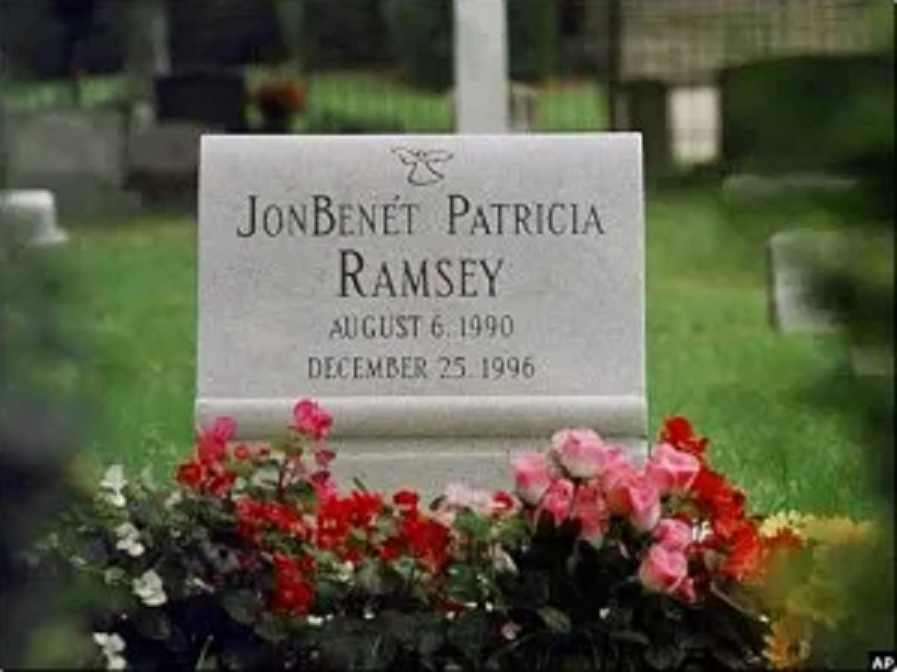
Kill Zoners – Who do you think really murdered JonBenet Ramsay?
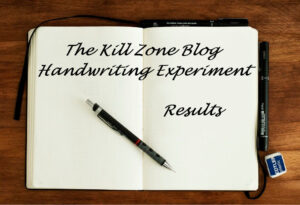
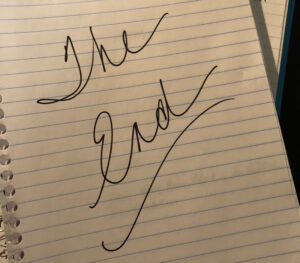

 I play three brain games each day. I start with my new addiction,
I play three brain games each day. I start with my new addiction, 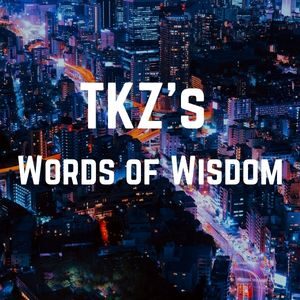

 Patsy Ramsey claimed to have come downstairs to the kitchen at five o’clock on Boxing Day morning and found a two-and-a-half page, hand-written ransom note on the landing of their secondary staircase. The author directed the letter at John Ramsey and claimed to represent a group of individuals from a foreign faction who were “in possession” of JonBenet. The note demanded a ransom of $118,000 be paid in certain bills or JonBenet would die.
Patsy Ramsey claimed to have come downstairs to the kitchen at five o’clock on Boxing Day morning and found a two-and-a-half page, hand-written ransom note on the landing of their secondary staircase. The author directed the letter at John Ramsey and claimed to represent a group of individuals from a foreign faction who were “in possession” of JonBenet. The note demanded a ransom of $118,000 be paid in certain bills or JonBenet would die.


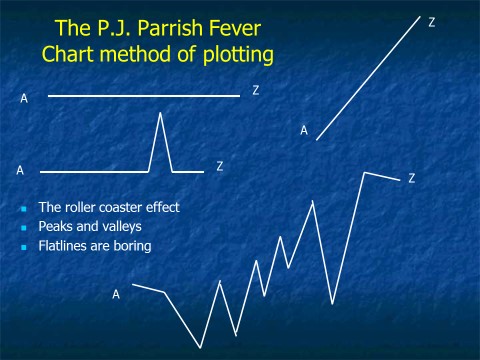
 Ever wonder why pumpkin spice is so popular? The fascinating part is not only does it taste amazing, but many are obsessed with how it makes them feel on an emotional level.
Ever wonder why pumpkin spice is so popular? The fascinating part is not only does it taste amazing, but many are obsessed with how it makes them feel on an emotional level. Today’s post is about a quandary faced by the writer of a series character. I’m anxious to have a robust discussion with our community of sharp readers and writers about it. Simply put, the problem is love.
Today’s post is about a quandary faced by the writer of a series character. I’m anxious to have a robust discussion with our community of sharp readers and writers about it. Simply put, the problem is love.